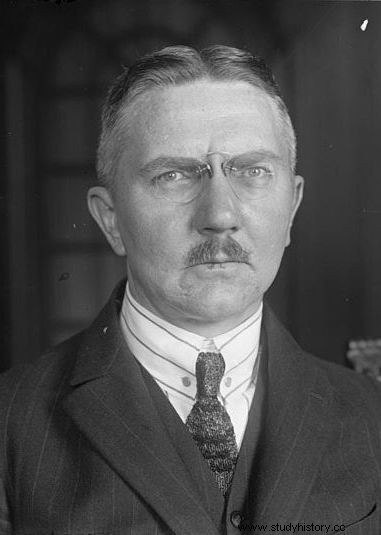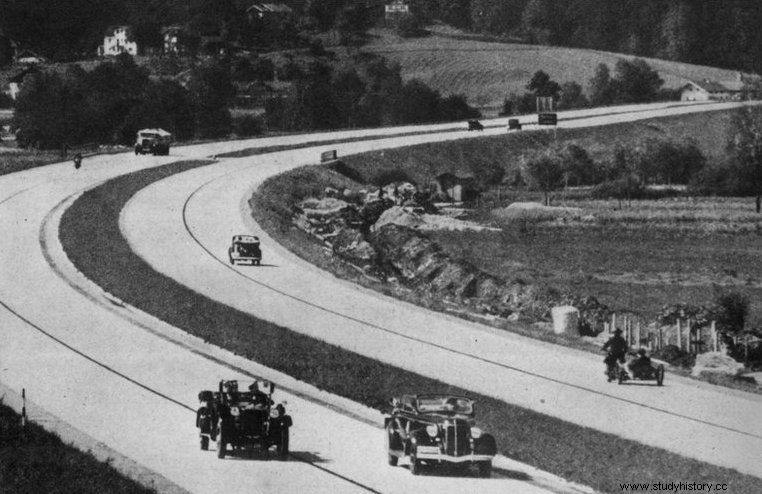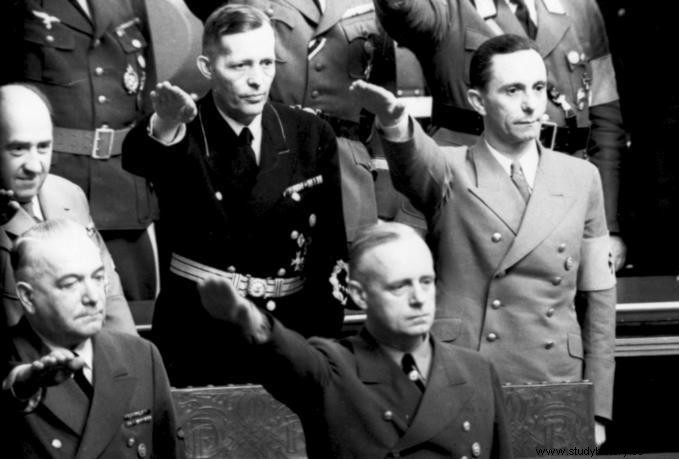Taking power in 1933, Hitler found the economy ruined and in just a few years he turned Germany into a land of milk and honey. So much for a myth. The truth was completely different. In fact, the Nazi leader owed the state to such an extent that the Third Reich was on the verge of bankruptcy in 1938.
At first glance, it may indeed seem that the National Socialists have found a recipe for the great crisis that has plagued Germany since 1929. The most visible sign of this was the marked decline in the number of unemployed.
Great illusion of success
In 1932, there were about six million more. Three years later - as Götz Aly writes in his book "Hitler's State" - The Employment Office reported 2.5 million unemployed, while a year later only about 1,610,000 people were unemployed.

Hjalmar Schacht, as president of the Reichsbank and minister of economy (1934-1937), was the chief architect of the German economic "miracle" (source:Bundesarchiv; lic. CC BY-SA 3.0).
A similar transformation took place in the area of budget revenues from taxes. Only in the years 1933-1935 they increased by as much as 25%, or almost two billion marks, which today roughly equates to approx. EUR 20 billion. At the same time, unemployment benefits fell by as much as DM 1.8 billion.
There is no reason to be surprised. Germany at that time became the largest construction site in Europe. Thousands of kilometers of new roads were being built rapidly, including concrete highways. New factories and monumental official buildings were erected to the fore. The industry was working at full speed to meet the orders that the armed forces were reborn like a phoenix from the ashes. And the contracts were really huge.
Suffice it to mention that from 1933 to mid-1939, the Third Reich spent 45 billion marks (the equivalent of around 450 billion euros!) On armaments. As Götz Aly emphasizes in "Hitler's State": This astronomical amount for those times exceeded three times the budget revenues from 1937 .
Long, long and long again
In order to cover such enormous expenses, the Nazis began to indebted the state from the very beginning. Only in the first two years they exceeded the spending limit by 300%. Public debt increased by DM10 billion.

One of the driving forces of the economy of the Third Reich was to be a large-scale plan to build a network of highways (source:public domain).
The real problems started in late 1937. It was then that the policy of uncontrolled deficit-widening got out of hand. The time for the repayment of earlier obligations was approaching inexorably, and the cash register was empty.
It was necessary to get money as soon as possible. Obviously, the easiest way was to get them out of the citizens. However, not all of them. According to the racist theories of the National Socialists, it was mainly Jews who were the target of harassment.
As we can read in "Hitler's State", as early as 1935, Minister Schwerin von Krosigk organized a competition for his officials for the best idea for additional exploitation of Jews . This resulted in the introduction of regulations significantly increasing the burden that had to be borne by the Orthodox Jews.
Three years later, the situation repeated itself. This time, however, much deeper into their pockets. After the events of Kristallnacht, the so-called Sühneleistung , or a "fine" of one billion marks!
Hitler finds a solution
Even that cash injection couldn't do much. In January 1939, the management of the Reichsbank sent a dramatic letter to Hitler, in which it was written:
The unlimited increase in government spending prevents any effort to clean up the budget, which will lead to the state of the state's finances […] to the brink of the abyss and thus ruin the issuing bank and corrupt money. So far, there is no brilliant and sensible recipe [...], to counteract the devastating effects of economic policies characterized by unlimited social spending.

Looking for ways to fill the budget gap, Minister of the Treasury Lutz Schwerin von Krosigk (pictured in a dark uniform), as early as 1935, announced a competition among the officials of his ministry for the best idea for additional exploitation of Jews (source:Bundesarchiv; license CC ASA 3.0).
The bankers were well aware of the deplorable situation of the state budget. During this time, public debt has already grown to over 37 billion marks (approximately EUR 370 billion). In relation to GDP, the debt increased in six years from 12% to 46%. Even Goebbels, who called the financiers "tangles," wrote in his journals about the rampant deficit.
Hitler saw only one solution to this burning problem - successive territorial annexations. Even if it meant a total war. It certainly wasn't a brilliant, let alone a sane prescription, but it didn't matter in the slightest to him. He couldn't let himself be no longer identified with the savior of Germany.
Source:
- Götz Aly, Hitler's State Finna 2015.
